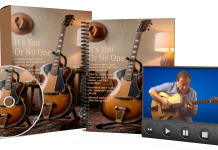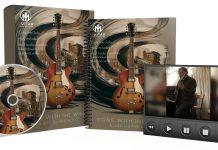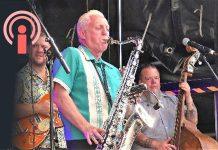This post may contain affiliate links. As an Amazon associate, Google associate as well as associate for other programs, Guitar & Music Institute may earn commissions from qualifying purchases.
In “Essential Blues Guitar Albums: check out the artists and recordings have not only stood the test of time but also influenced countless other new artists and fans alike. Here is a list from the raw emotional power of early blues pioneers to the innovative sounds of modern guitar heroes.
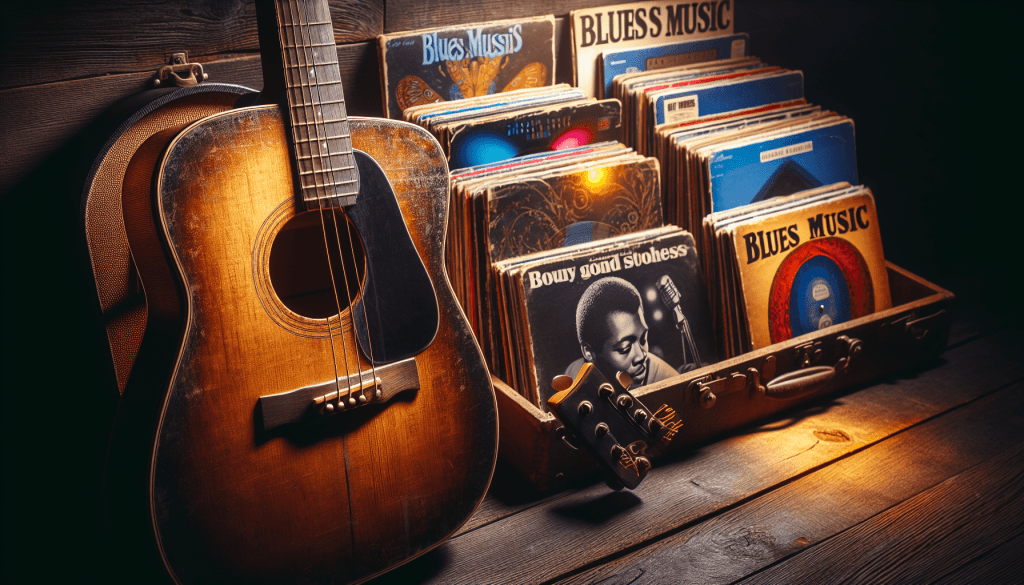
Robert Johnson – King of the Delta Blues Singers
Overview and historical significance
When you think of the Delta Blues, it’s likely Robert Johnson’s haunting voice and intricate guitar work that first springs to mind. Often hailed as one of the most significant figures in the history of the blues genre, Johnson’s mastery of the guitar and the mysterious, myth-laden stories of his life and death have made him a figure of endless fascination. His recordings in the 1930s, though few, are considered foundational texts of blues music, influencing countless musicians across genres and generations.
Key tracks and guitar techniques
Listening to tracks like “Cross Road Blues” and “Sweet Home Chicago,” you’ll quickly notice Johnson’s innovative guitar techniques. His ability to create a rich, full sound, that often seemed like more than one guitar playing, was groundbreaking. His use of the slide, intricate fingerpicking, and emotional depth in his playing, set a high standard for blues musicianship that remains influential today.
Influence on future generations of guitarists
Johnson’s impact on future generations of guitarists cannot be overstated. Legends such as Eric Clapton, Keith Richards, and Bob Dylan have cited Johnson as a key influence in their musical development. His songs have been covered, reinterpreted, and served as inspiration for countless artists across the blues, rock, and folk genres.
B.B. King – Live at the Regal
Contextual background of the live album
“Live at the Regal,” recorded in 1964 at the Regal Theater in Chicago, stands as one of the greatest live blues albums ever produced. It captured B.B. King, already a seasoned performer, at the height of his powers. The energy of the performance, combined with the enthusiastic response of the audience, created a vibrant and dynamic listening experience that brought the electricity of King’s live performances to the masses.
Analysis of B.B. King’s guitar style
B.B. King’s guitar style was characterized by expressive vibrato and the fluid, vocal-like quality of his lead lines. His famed guitar, Lucille, sang under his touch, with King’s use of bent notes and staccato picking creating a deeply emotional, expressive sound. This album showcases King’s knack for storytelling through his guitar, engaging the audience with every note.
Impact on blues and live recording standards
“Live at the Regal” had a profound impact on the blues genre and live recording standards. It showcased the potential for a live album to capture the essence of the blues experience, influencing both how live albums were produced and how performers approached live blues music. It remains a benchmark for live recordings, revered by guitarists and music lovers alike.
Stevie Ray Vaughan – Texas Flood
Introduction to Stevie Ray Vaughan’s debut album
“Texas Flood” marked the explosive debut of Stevie Ray Vaughan in 1983, immediately establishing him as a towering figure in blues and rock. The album was a revitalizing force in the blues genre, showcasing Vaughan’s phenomenal guitar skills, soulful vocals, and deep reverence for the blues tradition.
Guitar virtuosity and songwriting
On “Texas Flood,” Vaughan’s guitar virtuosity was on full display. His powerful, emotive playing, characterized by fast runs, fierce string bending, and a crisp, attacking tone, breathed new life into classic blues structures. His songwriting, too, demonstrated a deep understanding of the blues, while infusing it with a modern edge.
Legacy and revitalization of blues in the 1980s
The release of “Texas Flood” played a key role in the revitalization of blues in the 1980s, introducing the genre to a new generation of listeners. Vaughan’s passionate performances and dedication to the blues tradition inspired countless young guitarists and ensured that the blues remained a vibrant and evolving genre.
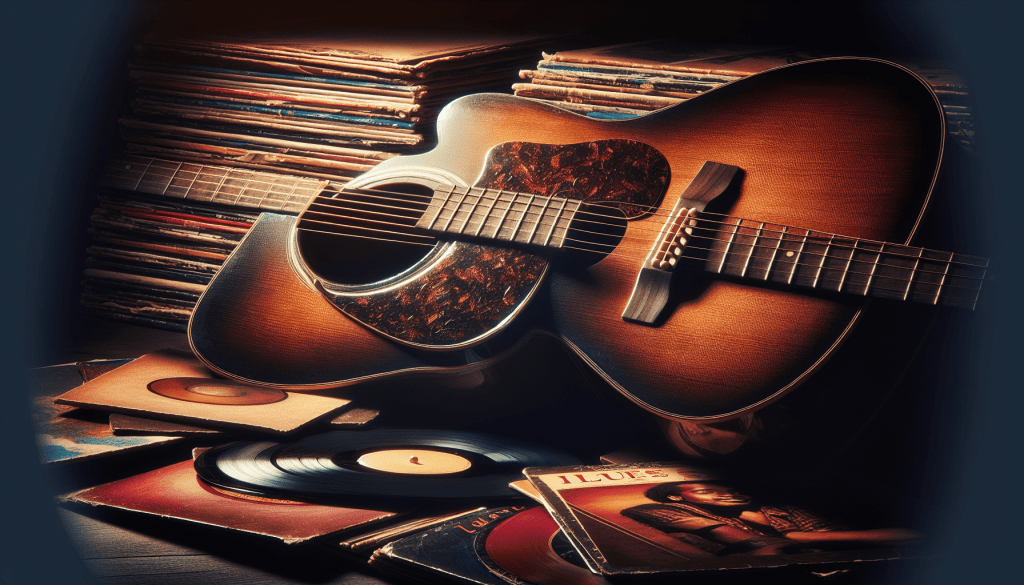
John Lee Hooker – The Healer
Collaborative nature of the album
“The Healer,” released in 1989, stood out for its collaborative nature, bringing John Lee Hooker together with an array of musicians from various genres. This blend of traditional blues with elements of rock, pop, and R&B, showcased Hooker’s versatility and broad appeal, breathing new life into his career.
The fusion of traditional and modern blues
The album is a testament to the fusion of traditional and modern blues. Hooker’s deep, rhythmic guitar work and growling vocal style meshed seamlessly with the contributions of contemporary artists, creating a sound that was both rooted in the blues tradition and appealing to a modern audience.
John Lee Hooker’s guitar sound and vocal style
Hooker’s distinctive guitar sound, characterized by a driving, boogie rhythm, and his deep, soulful voice, were both highlighted on “The Healer.” These elements, combined with the modern production and collaborations, created a work that celebrated the depth and breadth of the blues.
Eric Clapton – Unplugged
The setting and conception of the unplugged album
Recorded in 1992 for MTV’s “Unplugged” series, Eric Clapton’s “Unplugged” album was an intimate showcase of his guitar work and songwriting. Stripped of electric instrumentation, the setting allowed Clapton’s skills as a guitarist and vocalist to shine through in a new, compelling way.
Clapton’s acoustic guitar work and song selection
On “Unplugged,” Clapton’s acoustic guitar work was both delicate and profound, offering new interpretations of his own songs and classic blues numbers. The song selection, including hits like “Tears in Heaven” and “Layla,” performed in a new acoustic style, demonstrated Clapton’s deep roots in the blues while showcasing his versatility as a musician.
The cultural and commercial impact of the album
The album had a significant cultural and commercial impact, going on to win six Grammy Awards, including Album of the Year. It introduced a wider audience to the power of acoustic blues and solidified Clapton’s status as one of the genre’s leading figures. Its success also sparked a renewed interest in acoustic music and “unplugged” performances across genres.
Muddy Waters – Hard Again
The late career masterpiece
“Hard Again,” released in 1977, marked a late-career resurgence for Muddy Waters, one of the blues’ most iconic figures. Produced by Johnny Winter, a longtime fan and celebrated blues guitarist in his own right, the album recaptured the raw energy and emotion of Waters’ earlier Chess Records days.
Collaboration with Johnny Winter
Winter’s production and guitar work on the album complemented Waters’ powerful vocals and slide guitar, creating a work that felt both fresh and deeply rooted in blues traditions. Their collaboration was a meeting of minds that resulted in one of the most celebrated albums in Waters’ discography.
Significance of the album in Muddy Waters’ discography
“Hard Again” is significant not just for its musical excellence, but for how it rejuvenated Waters’ career, reintroducing him to a broader audience and reaffirming his place at the pinnacle of blues music. It serves as a powerful reminder of Waters’ enduring influence on the blues genre.
Albert King – Born Under a Bad Sign
The album’s role in blues history
“Born Under a Bad Sign,” released in 1967, played a critical role in blues history, bridging the gap between blues and rock. Albert King’s powerful, expressive playing and gritty vocal performances made the album a cornerstone of modern blues, influencing a wide array of musicians across genres.
Analysis of Albert King’s left-handed guitar technique
King’s distinctive left-handed, upside-down guitar technique contributed to his unique sound, marked by sharp bends and a biting tone. His playing on tracks like “Born Under a Bad Sign” and “Crosscut Saw” has been studied by guitarists seeking to emulate his emotive, forceful style.
The crossover appeal and its influence on rock music
The album’s crossover appeal, drawing in fans of rock and soul, underscored the interconnectedness of American music genres. Its influence on rock music, particularly on guitarists like Eric Clapton, Jimi Hendrix, and Stevie Ray Vaughan, attests to the power of the blues as a foundational musical form.
Buddy Guy – Damn Right, I’ve Got the Blues
Buddy Guy’s comeback album
After years away from the spotlight, “Damn Right, I’ve Got the Blues” marked Buddy Guy’s triumphant return in 1991. This comeback album revitalized Guy’s career, showcasing his fiery guitar playing and impassioned vocals to a new generation of blues fans.
Exploration of guitar tones and styles
The album is notable for Guy’s exploration of a wide range of guitar tones and styles, from the searing leads of the title track to the soulful, expressive solos in “Where is the Next One Coming From?” Guy’s versatility and ability to convey deep emotion through his instrument are on full display.
Awards and recognition
“Damn Right, I’ve Got the Blues” received widespread critical acclaim and earned Guy several awards, including a Grammy for Best Contemporary Blues Album. Its success marked a pivotal moment in the blues genre, highlighting the enduring appeal of the blues and its capacity for reinvention.
Howlin’ Wolf – Moanin’ in the Moonlight
Compilation of Howlin’ Wolf’s early work
“Moanin’ in the Moonlight” compiles Howlin’ Wolf’s electrifying early work, showcasing his raw, powerful vocals and unique harmonica style. Released in 1959, it gathers tracks recorded in the early 1950s, offering a glimpse into the Chicago blues scene of the era.
Guitar techniques and vocal style
Howlin’ Wolf’s guitar work, characterized by its rugged, visceral sound, combined with his unforgettable vocal style, full of growls and howls, created a compelling, deeply emotive listening experience. His music, embodying the spirit of the blues, left an indelible mark on the genre.
The album’s place in the Chicago blues movement
“Moanin’ in the Moonlight” solidified Howlin’ Wolf’s position as a key figure in the Chicago blues movement. His music, both raw and innovative, played a significant role in shaping the sound of electric blues and influenced countless artists who followed in his footsteps.
Evolution of Blues Guitar Album Production Techniques
From analog to digital: Changes in recording practices
The production of blues guitar albums has undergone significant changes, from the analog recordings of the early 20th century to the digital practices of today. These technological advancements have impacted the way blues albums are recorded, produced, and experienced by listeners, offering greater fidelity and a wider palette of sounds for artists to explore.
The role of producers in crafting the blues sound
Producers have played a crucial role in shaping the sound of blues albums, from capturing the raw energy of live performances in the studio to experimenting with effects and amplification to enhance the expressive power of the guitar. Their creative decisions have significantly influenced the sonic characteristics of blues recordings.
Innovations in guitar amplification and effects
Advancements in guitar amplification and effects have also transformed the sound of blues guitar albums. The development of overdrive, distortion, and reverb, among other effects, has allowed guitarists to create a broader range of tones and textures, enriching the auditory palette of the blues genre and opening up new avenues for artistic expression.
This post may contain affiliate links. As an Amazon associate, Google associate as well as associate for other programs, Guitar & Music Institute may earn commissions from qualifying purchases.



